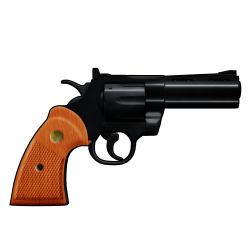Based on data gathered by the CDC, in 2020, the rate of suicide in the US population was 13 per 100,000, far more frequent in men (21 per 100,000) than in women (5.4 per 100,000). Firearms were the most common means, again higher amongst men than women. For fifty years, identifying the individuals at risk for suicide has been no better than a coin flip. A new study looks at whether there are markers that can improve the ability to identify the group of individuals using guns to take their life.
The researchers used nearly 5 million handgun transactions among 2 million individuals recorded in California between 1996 and 2015. They applied a form of machine learning [1] to the data. During this interval, 2614, or 0.07% of purchasers, committed suicide with a firearm within a year of its purchase. As is the case in machine learning research, the algorithms were “trained” on 3.5 million randomly selected records from within the entire database and then tested on the remaining 1.5 million records, which included 983 of those firearm-related suicides.
They found that the most important variables were
- Type of handgun - a greater percentage were revolvers despite the general popularity of semi-automatic weapons.
- Race and ethnicity – in this instance, White purchasers. Overall, in the US, the suicide rate for native Americans exceeds all other groups, followed by Whites. But the algorithm dealt with the more common groups in California’s records. This demonstrates a weakness in machine learning and raises a concern about bias. The machines learn what data you provide, like teaching for the test. Bias data in, biased learning out.
- Purchasers' age – the suicidal were four years older than the median of 43
- Month of purchase – By far and away, December purchases were associated with suicide
Other variables in the mix included distance to the dealer; the suicidal did not travel as far to purchase a weapon. Unlike other gun purchasers, they bought far fewer weapons. During the previous year, the suicidal had only bought one weapon; others had bought 1.3. This difference was dramatically increased when looking back over ten years when the non-suicidal had 3-fold more handgun purchases.
The algorithm was certainly not fool-proof, but its predictability improved from the previous coin flip of 50-50 to a “certainty” of 80%. When coupled with California’s mandatory 10-day waiting period, it may afford us some opportunities. The researchers point out that letters expressing concern.
“sent to military service members identified as being at risk of suicide was shown to reduce rates of suicide attempt and ideation,”
and that a letter explaining one’s legal obligations in owning a firearm increased the rate of reporting stolen weapons. More intrusive approaches might trigger a mental health evaluation or court-ordered hold on purchase. For those among us that believe it is a gun owner's mental health, not their purchase, that should be of concern, these more intrusive approaches may be a better tradeoff than more significant gun restrictions, especially in this instance, where we are talking about self-harm.
While the researchers admit that the algorithm is not ready for prime time, they have identified variables that warrant further research.
[1] As a broad generalization, decision tree algorithms (if this, then that) are derived from various aspects of variables within a data set. These are then recombined into a “forest” of decision trees that more closely model the data. It serves to identify the most important variables. The intrepid can learn more about this technique here.
Source: Machine Learning Analysis of Handgun Transactions to Predict Firearm Suicide Risk JAMA Network Open DOI:10.1001/jamanetworkopen.2022.21041

